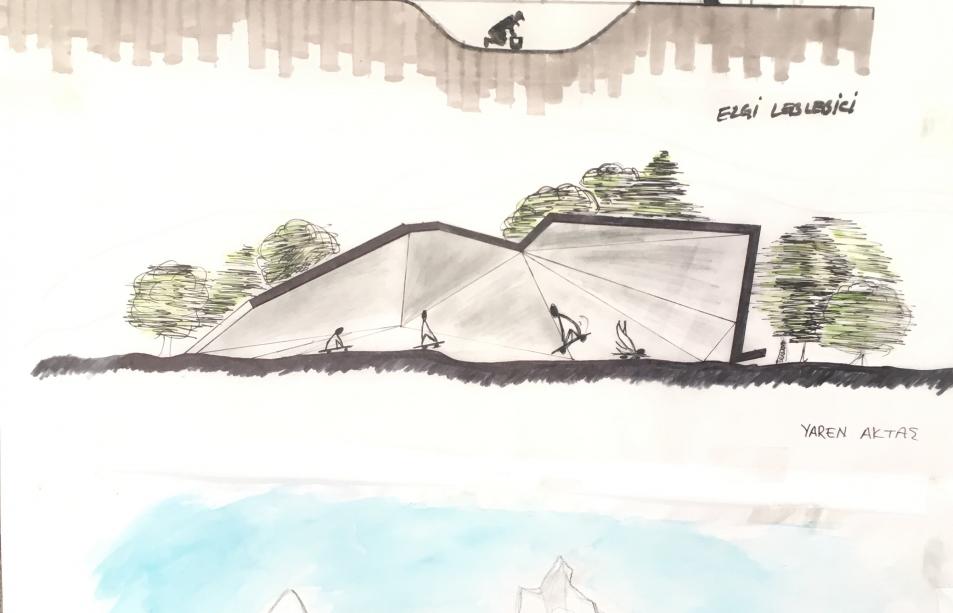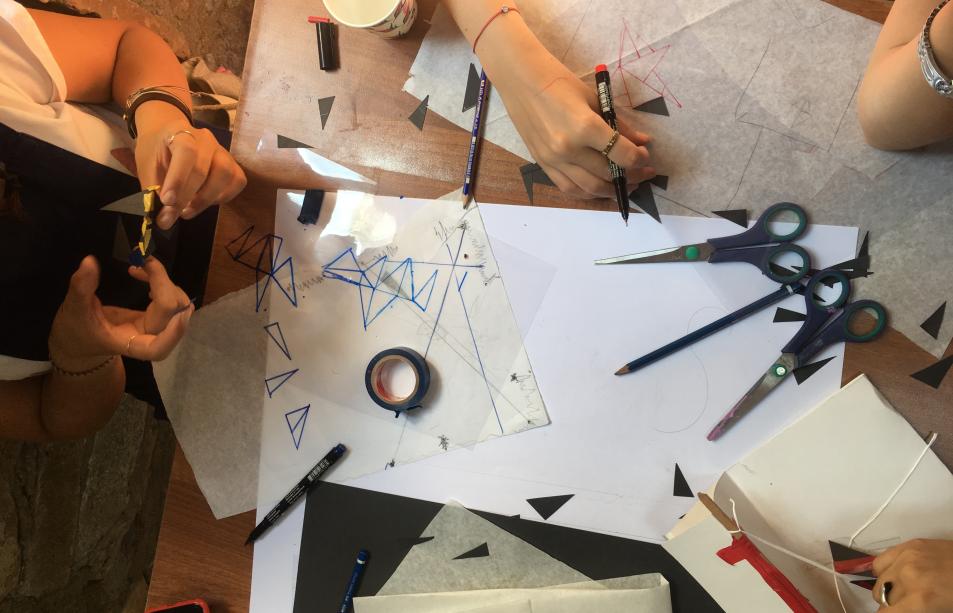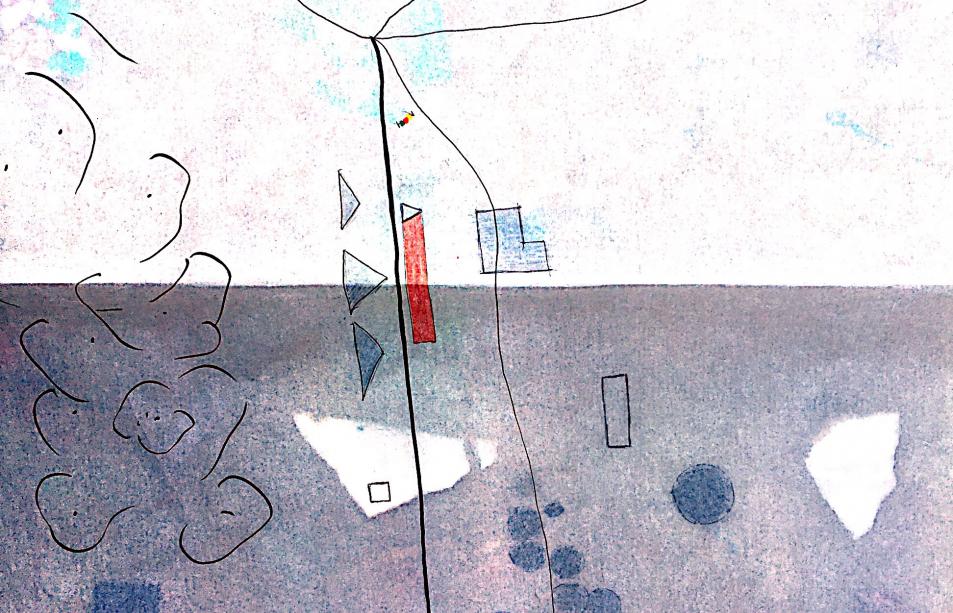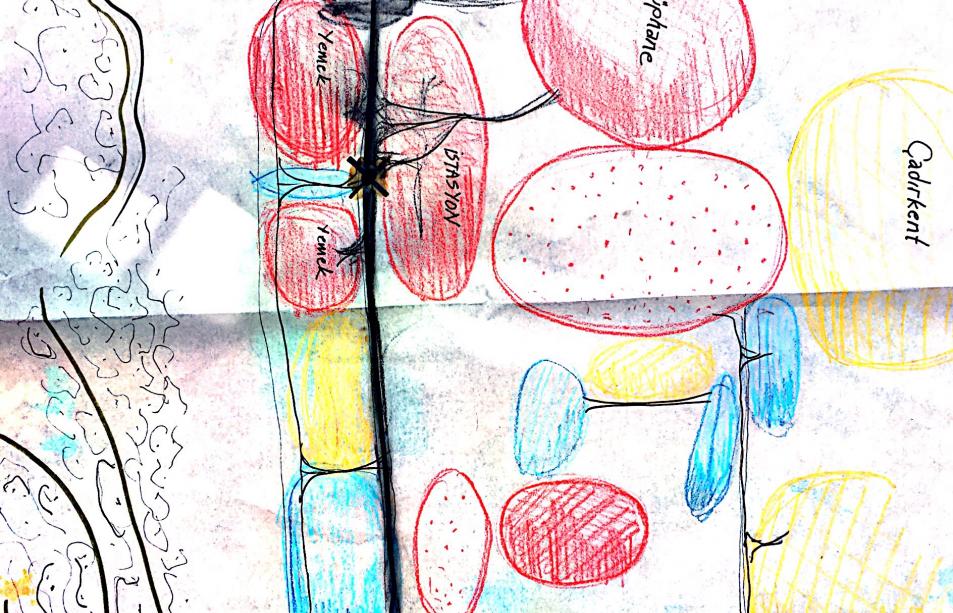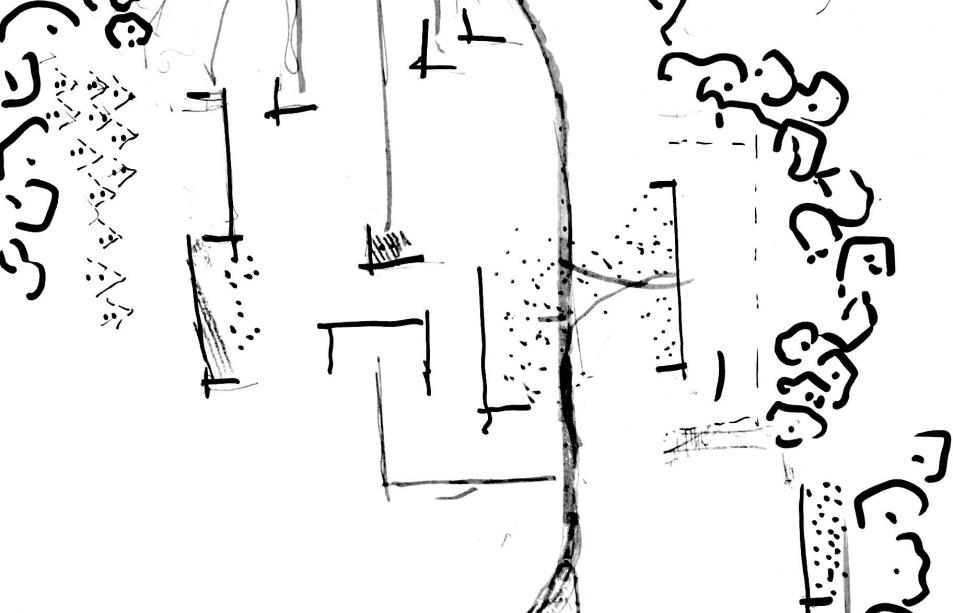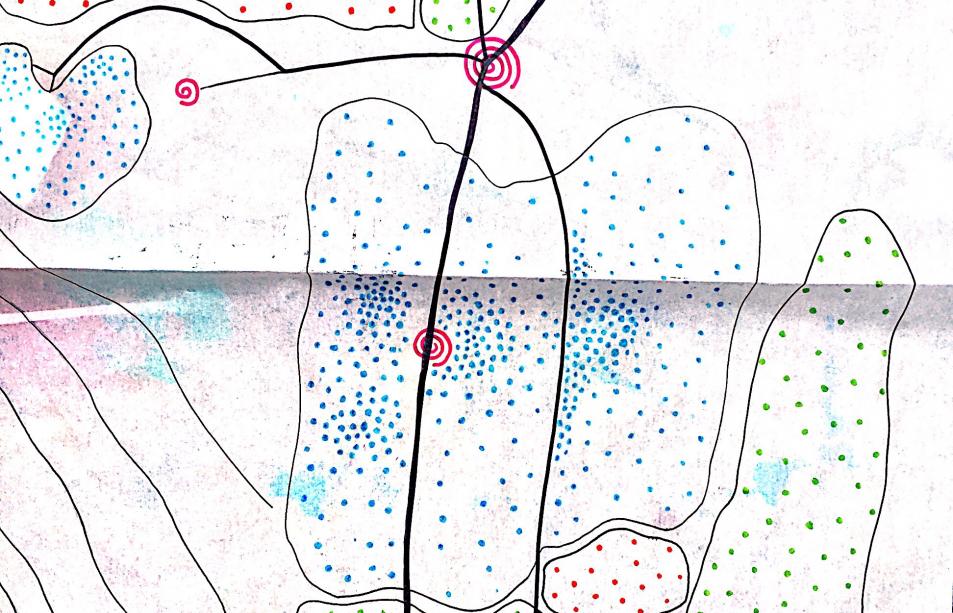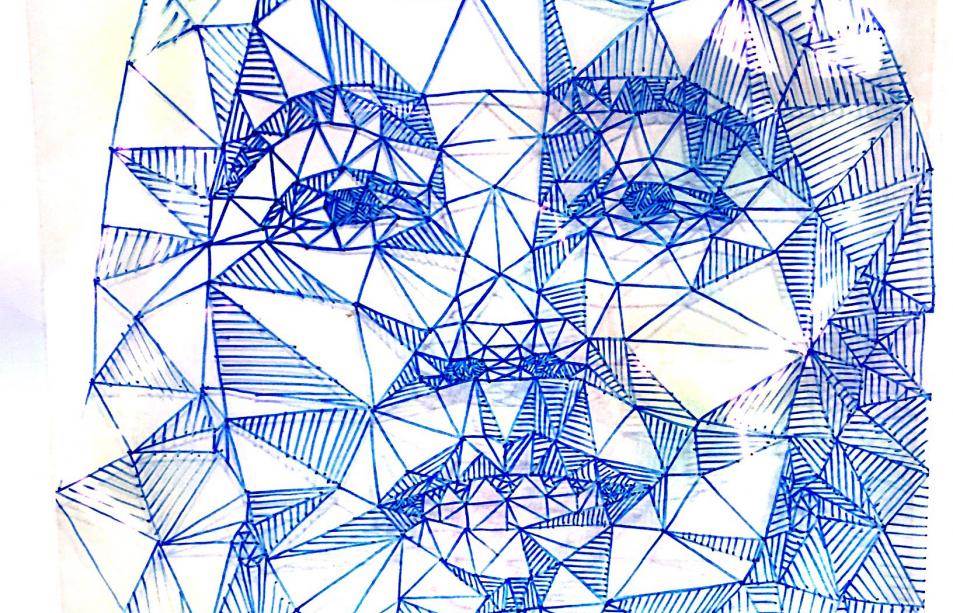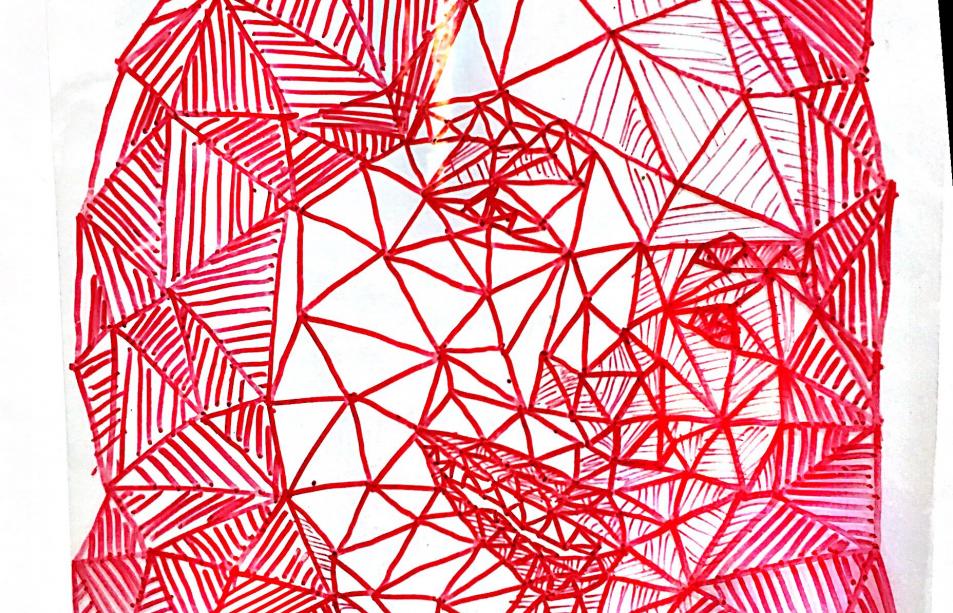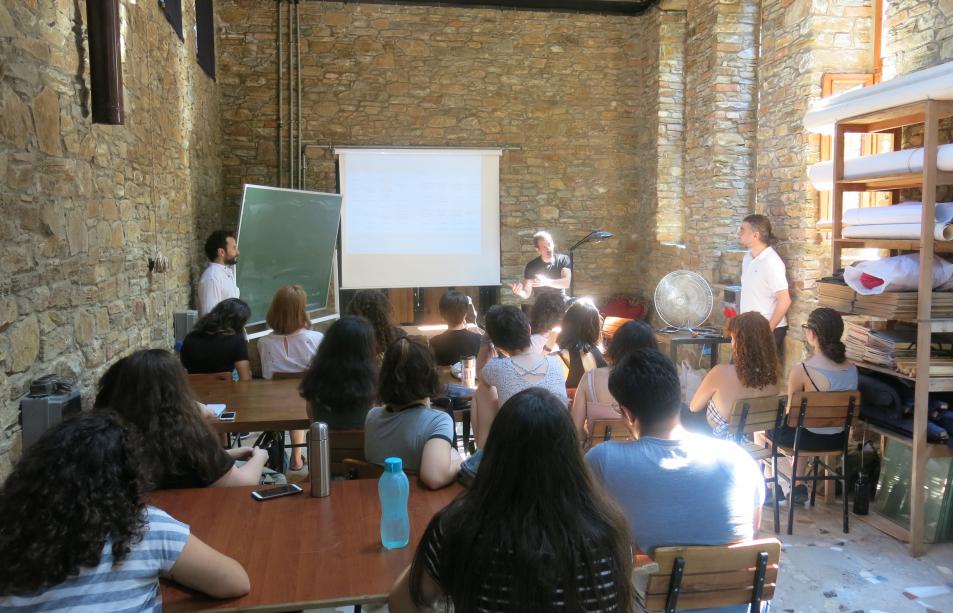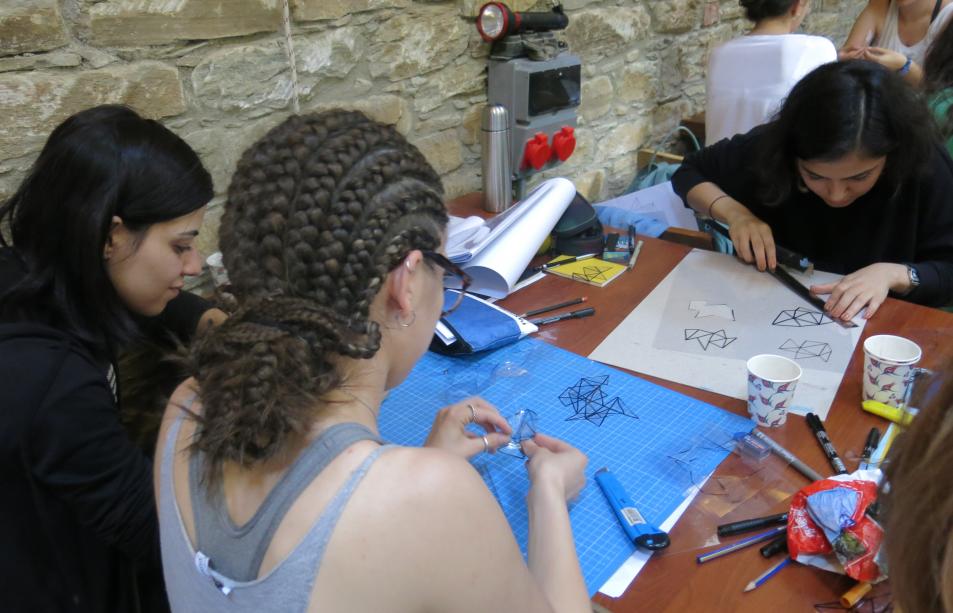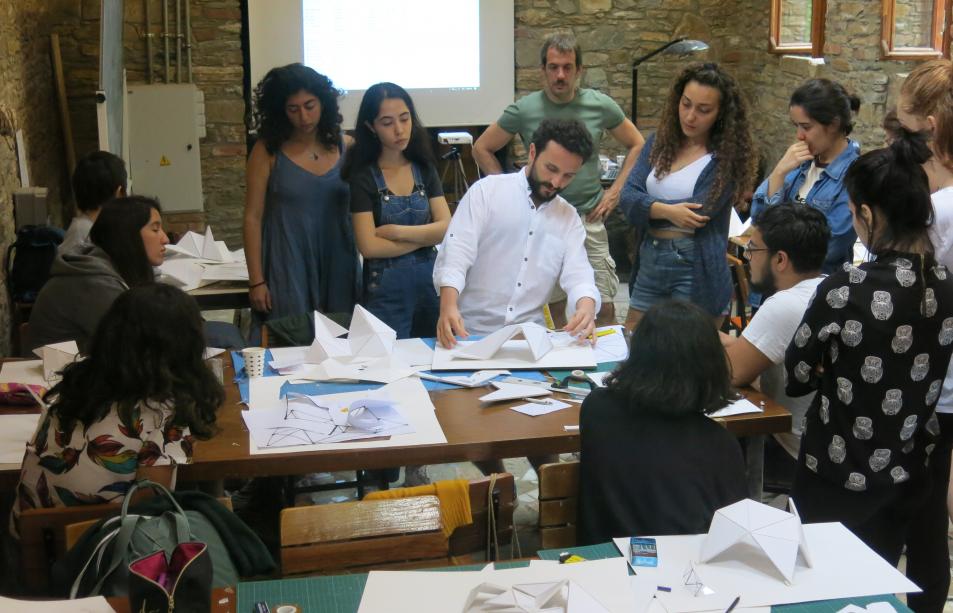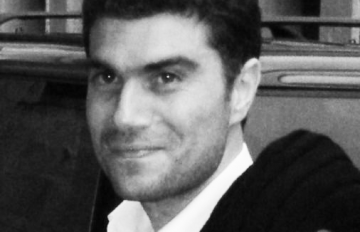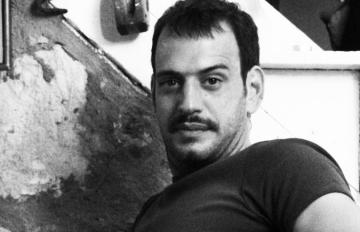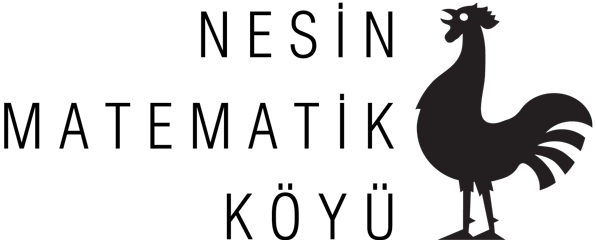Aims of the Workshop: To understand and apply a 3-dimensional and space-scale perception as an important thinking and practicing method in architecture as well as to understand and apply abstract thinking as an important way of thinking and practice.
Goals of the Workshop: To develop abstract thinking, abstract design and application skills.
The workshop, which consists of theoretical presentations and three practical end productions, is conducted through both individual and group studies. The program focuses on Abstraction, Euclidean geometry, creating surfaces and spaces and the application of space to a topography. During the workshop, theoretical presentations and practices are developed to improve craft making with specified materials. At the end of the workshop, participants use an area in the vicinity of Nesin Village to design their own drawings using the techniques mentioned throughout the workshop.
Conceptual Framework, theoretical presentations:
Abstraction is the process of reducing or extracting the information content of a concept. This extraction is often done to make it easier to obtain the information needed for a particular purpose. Abstraction in architecture is one of the most important methods applied in the design process as well as being able to understand and read existing structures.
Topography is the surface of a land brought to nature with natural and artificial details. The calculation, scaling and drawing shown on the paper as a map or table is also referred to as topography. The topography is also a schema describing the relation of a structure with another. They are not simple surfaces-planes but can also be designed in different shapes in 3D. Topography can be flat, folded, sloping, graded, or it can be at different levels. These differences on the surface allow a variety of functions.
The covering plate-shell, is one of the protective elements which surrounds and closes the space to protect it from the natural conditions. The covering plate can be designed in various shapes in 3D. Flat, folded-curved, protruded-grooved, curved, etc. it can be as low or as high as it can be. Upper planes also describe life underneath.
A tessellation-mosaic tiling is dividing an area or surface into small pieces of space-subunits.
Workshop studies
Workshop 1. Triangulation-Autoportrait
Workshop 2. Constellation
Workshop 3. Tesselation
Workshop 1. Triangulation-Self-portrait (individual exercise)
Participants draw their portraits with the technique of triangulation, marking elevations and pits. They form an abstract representation of their faces as a topography.
Workshop 2. Constellation (individual exercise)
From the constellation and triangulation experiments shells are formed and scaled and transformed into a space to make cross-section drawings.
Workshop 3. Tesselation (group exercise)
The workshop participants design a functional shell from triangles and apply it to the workshop location.
